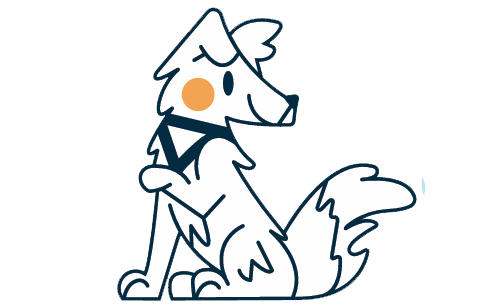Upcycling: what is it?
Upcycling is an eco-responsible approach that's part of the circular economy. By tapping into creativity, it allows for the reuse of materials and a shift in consumption.
“In the 21st century, nothing is thrown away, everything is transformed!”

Upcycling, an ecological gesture above all...
…because our planet's resources are limited. Upcycling involves recovering materials or products that we no longer use and transforming them into new, high-quality, and aesthetically pleasing products. It involves reusing waste, in this case fabrics (end of rolls, scraps, used clothing) for Style de Woof.

Upcycling, a creative and innovative approach
The concept taps into our creativity by stimulating our neurons to find a new use and, therefore, a new life for a product. In this way, upcycling promotes the creation of unique objects or limited-edition production.

What are the differences with recycling?
- Recycling allows the reuse of the original material to make new ones.
- Recycled materials such as paper, plastic or textile fibers for example, which most often require mixing with conventional materials to maintain a quality grade.
- Recycling is a transformation process that requires the use of water, chemicals and energy unlike upcycling.
Did you know?
When we analyze the life cycle of a pair of jeans, from the cultivation of the cotton to its end of life, we discover that it has a very, very significant environmental footprint due to:
10 000
Its manufacturing which requires a total of between 7,000 and 11,000 liters of water, the equivalent of approximately 285 showers.
35%
All countries combined, denim accounts for 35% of global cotton production.
65 000
From cotton production in Benin to assembly in Tunisia, a pair of jeans can travel up to 65,000 km before ending up in our wardrobes.
Cotton, often grown with insecticides and fertilizers, is spun (sometimes with petroleum-derived elastane for added flexibility) and woven into denim before being cut and sewn. Then, treatments such as stonewashing, washing, sandblasting, etc., transform the denim into jeans, but some methods, such as sandblasting, are dangerous for workers. Production also includes finishing touches (buttons, embroidery, rivets, leather patches). Finally, there are the packaging, storage, sale, care (with detergents), and disposal of the jeans, often by incineration or landfill.
As for our harness buckles, do you know where they come from?
From the start of our project, we established a partnership with the Décathlon head Protection team, from the B'Twin village in Hauts-de-France, which develops helmets at Décathlon.
They supply us with some of the buckles for our small harnesses, which come from their bicycle helmets from the B'twin Village test laboratory.
Why this approach?
The tests conducted in their lab are destructive. So instead of throwing away the test samples, the helmets are dismantled to recycle the buckles and straps with local upcyclers.

And that gives that:
Recycling bicycle helmet buckles is a recycling approach that is part of waste management, one of the pillars of the circular economy...
Newsletter coming soon...





